Guyanese literature is multifaceted and, not surprising for any national literature, it becomes very difficult to generalise or reach pat conclusions about it. Among the best attempts to capture it in a single document is that account of it written for Peepal Tree Press by Jeremy Poynting. One cannot get more comprehensive and informed than that. There are, however, compartments of it, both diachronically and synchronically, that can be usefully focused and analysed. Guyana’s Independence Anniversary provides a pertinent context for a glance at some of these compartments and at how the literature developed and shaped itself before and after Independence.
One may begin with the Colonial Era, moving from the historical beginnings to Emancipation and Post-Emancipation; then Pre-Independence Literature including its different phases – the beginning of Modern Guyanese Literature, Imitation and the struggle for cultural identity, followed by the period of Nationalism; next would be Post-Independence Literature with various sub-sections – Nationalism, the influence of Republicanism, and then Contemporary Guyanese Literature with its innumerable sub-sections including Guyanese East Indian Literature and various new directions.
Two very important compartments are the oral literature and the drama. The oral literature is traditional, indigenous and was there before any of the written literature. It remains closely allied with the indigenous traditions, mythology, beliefs and theatrical or performance traditions. The richest store of these is in the Amerindian tales, then there are those belonging to the story-telling tradition and oral poetry, and the current ascendancy of spiritual narratives. The drama has roots in and other influences from the traditional, but may also be traced from the Colonial era to the origins of Modern Guyanese drama, which thereafter developed in stages – Pre-Independence, the growth of local theatre, to Post-Independence – the popular movement and the contemporary drama with new trends in social realism.

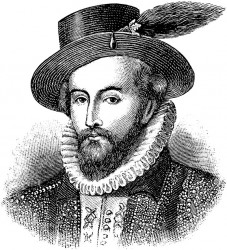
The Colonial period of Guyanese literature continued through history up to Emancipation and including nineteenth century works such as Everard im Thurn’s Among the Indians of Guiana (1883) Barrington Brown’s Canoe and Camp Life in British Guiana (1876), William Hillhouse’s Indian Notices (1824), and Richard Schomburgk’s various pieces around 1840. A notable black British Guianese, the poet Francis Williams as well as John Edward Jenkins, (who was British) author of Lutchmee and Dilloo (1877) would help to round off the Colonial Emancipation and Post-Emancipation period. The several volumes here include very important contributions made mostly by expatriates. They contain, inter alia, records of the oral literature (mainly Amerindian) and defined the colony of British Guiana, but compiled a literature that was still colonial in character, and that includes the work of the poet Williams.
There was to be a new awakening by the end of the nineteenth century in more ways than one. The first was the beginning of modern Guyanese literature, by Egbert Martin (1861 – 1890) who wrote under
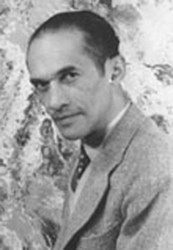
the pseudonym “Leo” and who earned the title the founder of Guyanese literature. In fact, such was his talent, impact and reputation, that he may be regarded as the beginner of Caribbean literature (“the first native West Indian poet of substance” – Caribbean Review of Books, 2007). Martin was a Victorian writing in the style and metre of his time, but he managed to create a literature that identified the Victorian colony in which he lived and gave its literature shape, form and liberation from imitation. He was the first Guyanese to publish a collection of verse within the colony. His publications were Poetical Works (1883), Leo’s Local Lyrics (1886) and a collection of short stories Scriptology (1885).
The second factor in this awakening was the work and the wave of consciousness started by Joseph Ruhoman with his treatise India: the Progress of Her People at Home and Abroad and How Those in British Guiana May Improve Themselves (1894). Here was a further localisation of intellectual thought, writing and publication when natives of British Guiana began to engage in these endeavours on a much larger scale than previously. Natives were doing this even before Leo – for example, Francis Williams; but in the case of Leo it was of the proportions of the founding of a brand of literature, and with Ruhomon it was the involvement of a larger number of local natives and the beginning of a large cultural awakening.
Ruhomon’s was a rallying call to East Indian immigrants and their descendants and his idea of culture and consciousness was the culture of the Indian motherland. There was, indeed, a rise in consciousness and this work was continued by others. These included Ruhomon himself, his brother Peter Ruhomon and CEJ Ramcharitar Lalla. Since they were all poets, and were responsible for a newspaper, it contributed to writing. Several cultural and service clubs emerged from this as they began to very actively pursue the cause of Indian culture, the arts and literature in British Guiana. Dramatic groups such as the British Guiana Dramatic Society and the Georgetown Dramatic Club which started in the first quarter of the century and were active in the 1940s and 1950s. Rajkumari Singh, who became a literary and dramatic matriarch in the 1960s and her husband Harnandan Singh were involved in drama.
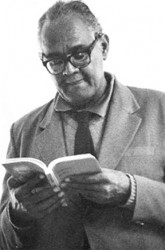
There was a similar rise in cultural consciousness among African descendants around the same time, which also had its impact on how the literature developed. One of the leaders of this was playwright and editor/anthologist Norman Eustace Cameron who set himself a mission on his return from Cambridge (he studied mathematics). He was responsible for The Evolution of the Negro and for founding modern Guyanese drama. His mission was to create and encourage a Guyanese literature in which black people were dignified with heroism and dramatic stature.
Despite such ethnic consciousness, deepening cultural awareness, and the previous example of Leo, this was largely a period of imitation. As a reflection of what had similarly taken place in the rest of the Caribbean,
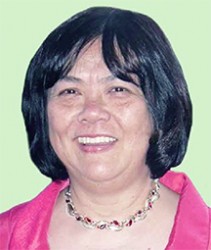
the poetry suffered from imitation of Victorian verse and Romanticism of English literature. While many Guyanese poets emerged during this period, even the culturally ‘conscious’ work wanted progressiveness.
It was not until the 1940s that the next stage in the literature’s development took shape. There emerged an era of nationalism. AJ Seymour who was one of them, said they were regarded as “upstarts”, to dare to do what only English writers did, but they began to create a literature with a Guyanese identity.
In this period, local Guyanese social realism was born led by the work of Edgar Mittelholzer. Works such as the pioneering Corentyne Thunder (1941) and The Life and Death of Sylvia set the terms for this rise in fiction. The appearance of the literary magazine Kyk-Over-Al was clearly another catalyst since it not only published several short stories and poems, but critical and historical articles which attempted to cover the writing and the cultural landscape, providing a companion to the literature and attempts to define the climate within which it worked.
It was the time of literary readings and discussions, clubs like the PEN and a gradual but constant rise in nationalism, which persisted through the Independence period. It also accounted for the development of Wilson Harris, who was at that time a poet, fellow poet Martin Carter, and Jan Carew, among others. Such political movements as the development of trade unionism, the PAC, the PPP (eventually the PNC), and the movement towards Independence affected the social climate as they did the literary superstructure. Carter was almost alone among writers who responded immediately to actual political situations like 1953 and the racial atrocities of 1962. These were to emerge in the Guyanese literature of two decades later.
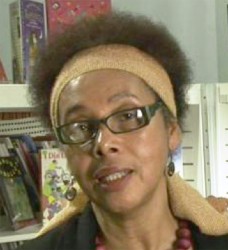
It was in the Post-Independence contemporary period that the literature began to diversify and explode into several different directions that call for diligent study and attention to properly pin down critically. Here, more than anywhere else, generalisations cannot address it satisfactorily. Among the several developments have been – the rise of East Indian literature, and the literature treating past political situations such as the racial hostilities in the early 1960s and the controversial Burnham era.
This literature multiplied extensively in Britain and North America more than it did in Guyana itself. The literature also made its mark in the international field with Guyanese writing establishing and exerting itself. This happened because of the work of such foundation and distinguished leaders like Martin Carter, Wilson Harris, Roy Heath as it did because of newer ones such as David Dabydeen, Fred D’Aguiar, John Agard, Grace Nichols, Jan Shinebourne and Mark McWatt.
Some of these developments that began to manifest themselves in the kinds of entries that began to come in after the start of the Guyana Prize, after 1987, such as the political work, the Indian work, some strong metaphysical work, social realism and the drama, all deserve separate treatment that will have to be attempted later.




